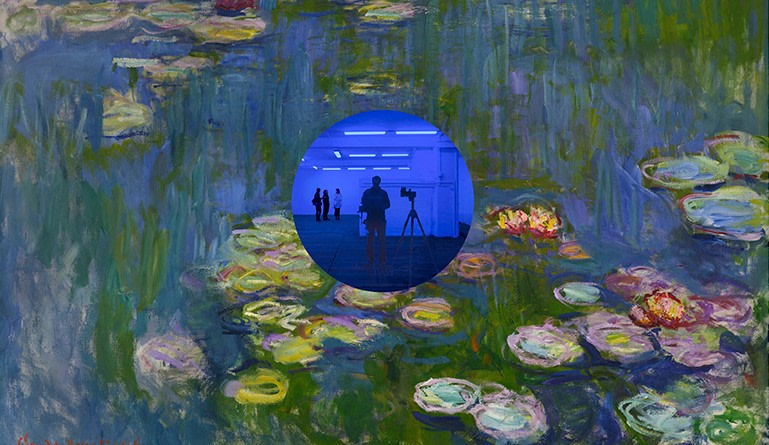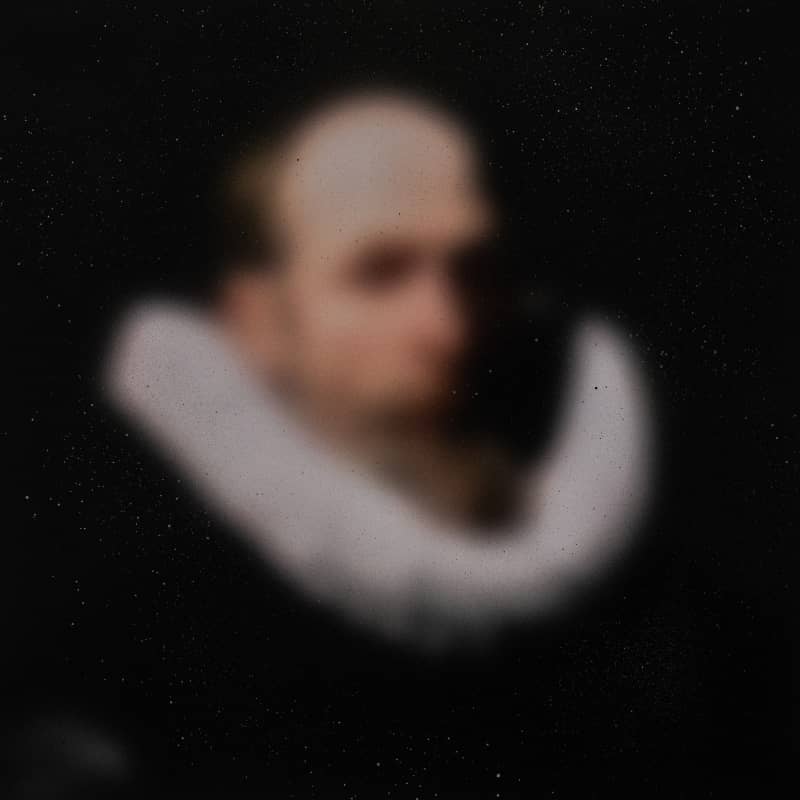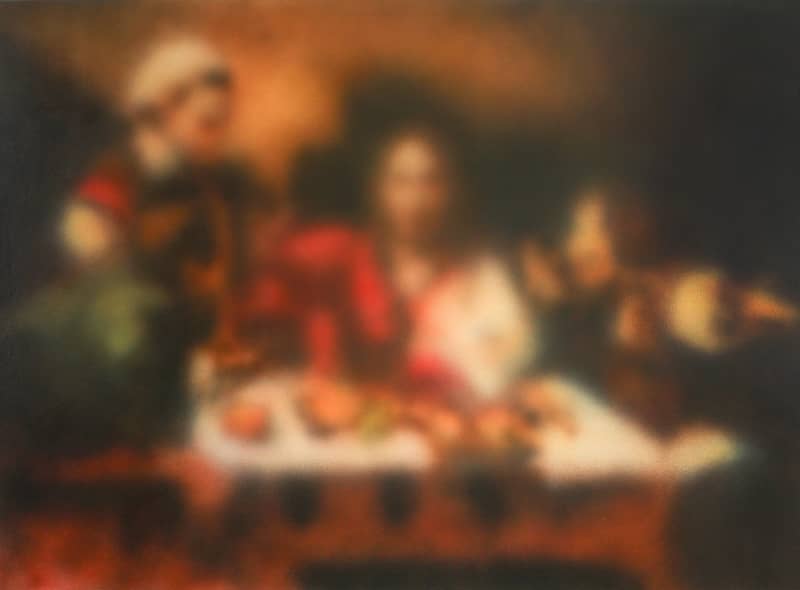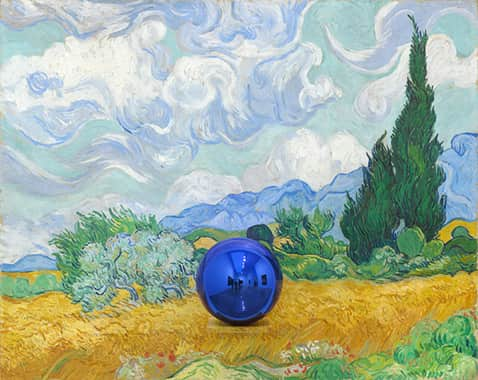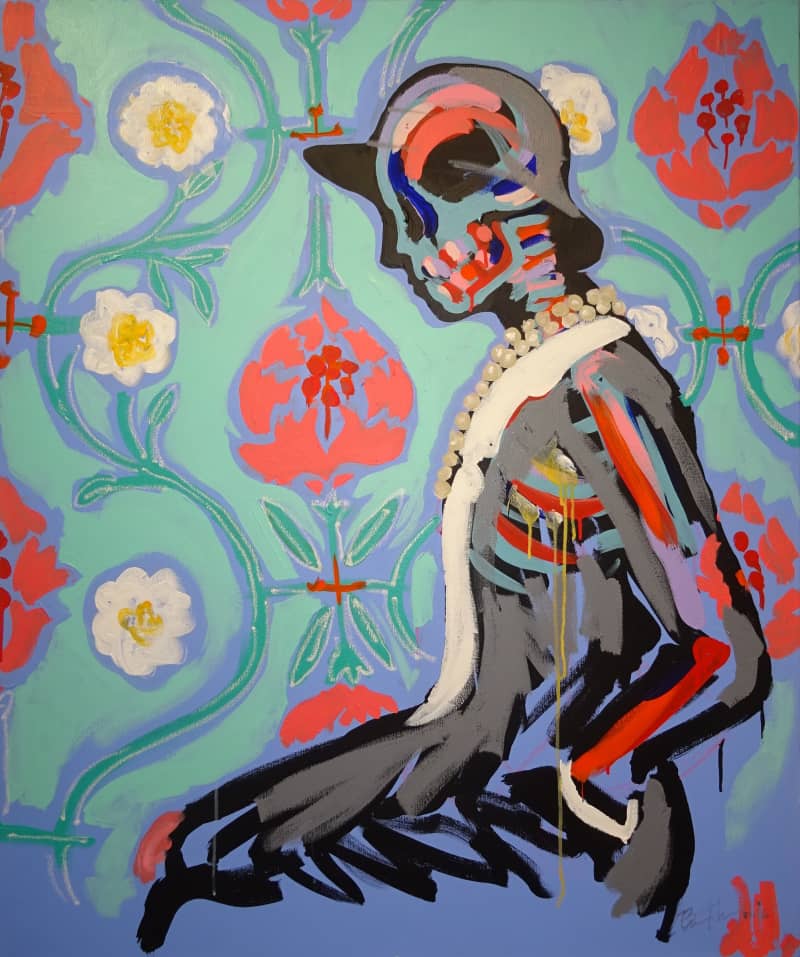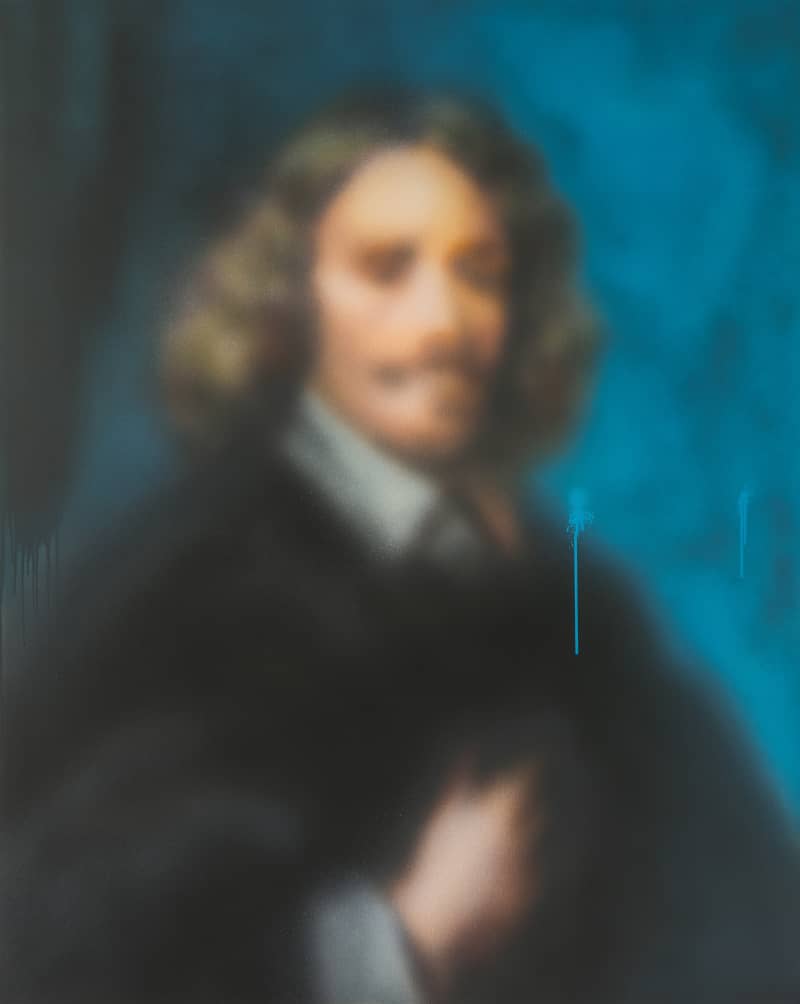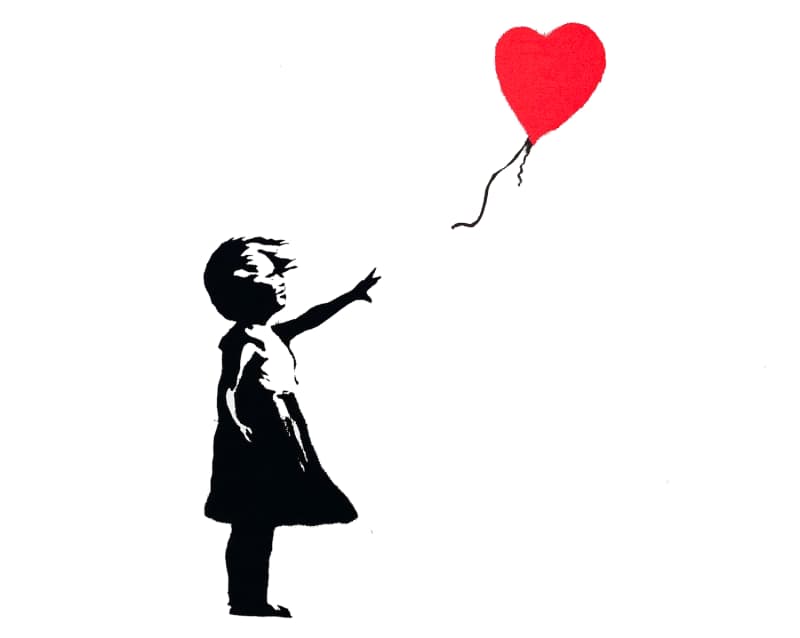In a time when art is more diverse than ever before, it is important to remember pivotal moments which shaped the history of art as we know it today.
The Miaz Brothers, Rory Hancock, Bradley Theodore and Jeff Koons are artists who, among others, have put a contemporary twist on historical moments and subjects. A popular aim of many artistic practices is to record the time we live in, but also to reflect on the past. Witnessing and exploring artistic creations is how we write the history of art. In honour of this, we look at a selection of works inspired by art history itself – as responding to other practitioners’ work is an important way for artists to exchange information and to add to a global discourse on visual culture.

THE MIAZ BROTHERS
This dynamic duo employs a unique way of artmaking which challenges the viewer visually. Using spray paint to create canvases of various subjects, the blurred effect is their well-known aesthetic. As a result, the viewer does not have an instant connection with the subject matter. The work invites them to make their own associations through a rigorous thought process. In Royal Blue, we can just about make out that the depicted person is a young Queen of England. Inspired by this historical figure, the Miaz Brothers provide a contemporary take on a traditional and well-known icon. Created to commemorate the Queen’s Jubilee, the portrait contains the evidence of painterly skill beneath the blurry surface, which evokes both respect and curiosity within the viewer. The Miaz Brothers have almost anonymised the portrait, creating an interesting discussion on perception. Through years of experimentation and challenging the way the traditional artworld operates, the brothers have effectively rebelled against established rules of artmaking.

RORY HANCOCK
All those who have immersed themselves in the world of art, be it in formal education or soaking up some culture at an exhibition, have an idea about how stringent the rules of artmaking used to be. Perspective, anatomy, and realism were some of the principles based on which classical painters used to work. In a contemporary context, art practices and methodologies of image-making have significantly loosened - there are hardly any precise categories, hardly any strict rules or academic criteria that work must meet in order to achieve its ‘art’ status. We see an example of a playful examination of classical images in Rory Hancock’s work. In his practice, he depicts distorted images of well-known historical works of art, challenging the viewer’s perception. The artist is inspired by the fact that, like everything over time, ideologies and collective theories can change, evolve, and become unimaginably different compared to the past.

BRADLEY THEODORE
In the visually rich practice of Bradley Theodore, we witness a perfect example of a contemporary ‘screenshot’, so to speak, of important historical figures not only in art, but also in fashion. A work of art immortalises its subject matter and provides material for contemplation and reflection for a wide range of audiences, consumers, and participators in the art world. Works which depict iconic figures who played, and still play, a part in the shaping of visual culture, like Anna Wintour, Frida Kahlo and Karl Lagerfeld, fit into a contemporary art history as a tribute paid by both the artist and the audience. The contrast between the vibrant, expressive brushstrokes and the skull motif creates a curious distinction between the concepts of life and death; living beyond death as a historical figure, living forever as an artwork.

JEFF KOONS
The way art movements interconnect, and the way artists add to discourse concerned with visual culture is often rooted in the act of appropriation. In this example, we see a replica of a historical artwork – Claude Monet’s ‘Water Lilies’, but with an addition. A shiny blue sphere is placed within the repainted masterpiece, altering its meaning - a hybrid of an artwork, containing the artistic skills of two of the greatest artists of our time. In the sphere, the surroundings of the work are reflected, and the viewer can see themselves as they connect with it. This creates more than an artistic moment to be enjoyed – it creates a conversation. You are looking at this artwork and the artwork is looking back at you.
Jeff Koons engineered the way the sphere is positioned within the work – this artistic act exists as a reminder that the skill we admire in practitioners has changed over time. Whereas during the time of Monet, the admiration was aimed at the ability to represent light and colour in such a lively way that the painting transported you into the scene, today we appreciate the way an artist like Koons can re-interpret this masterpiece and address cultural trends in our society. We feel as if we are in a dialogue with both the authors of the artwork. The participatory aspect of the interpreted ‘Water Lilies’ feeds into our ways of seeing and experiencing the visual world. The act of looking is celebrated through the establishment of relationships between history and contemporaneity. In the words of Koons, ‘everybody is in this dialogue of sharing enjoyment and pleasure’.
WORKS AVAILABLE
Basket
Please note items are not reserved until you have completed checkout.
No items found
Close
Your saved list
This list allows you to enquire about a group of works.
No items found
London
Gstaad
Los Angeles
